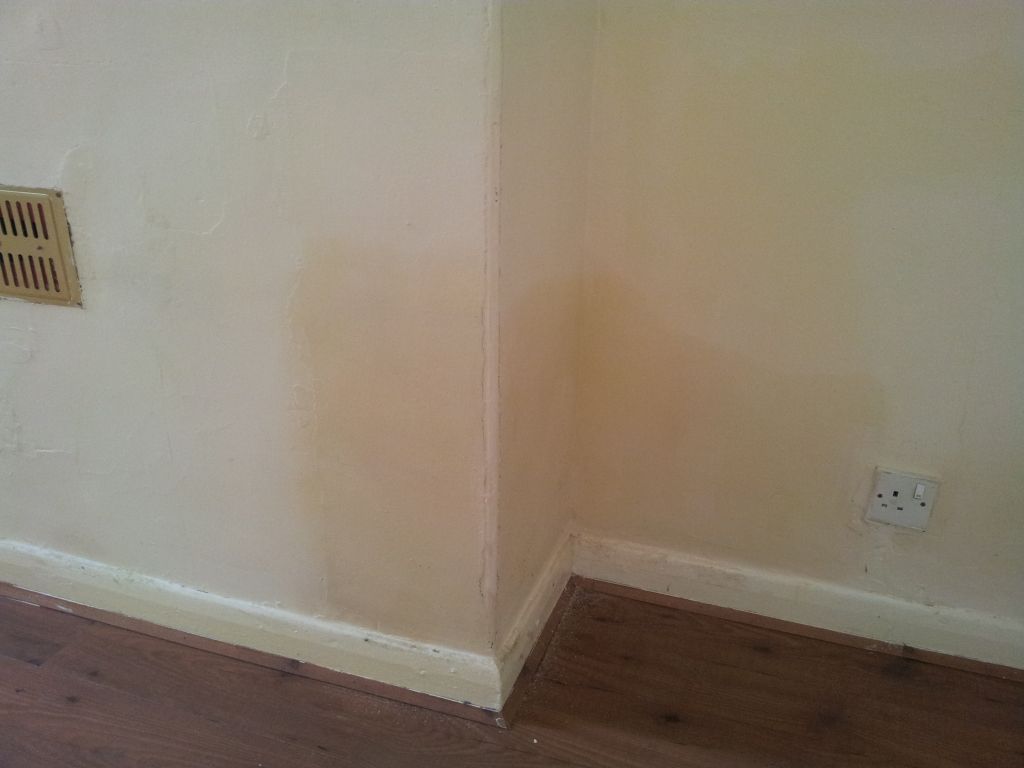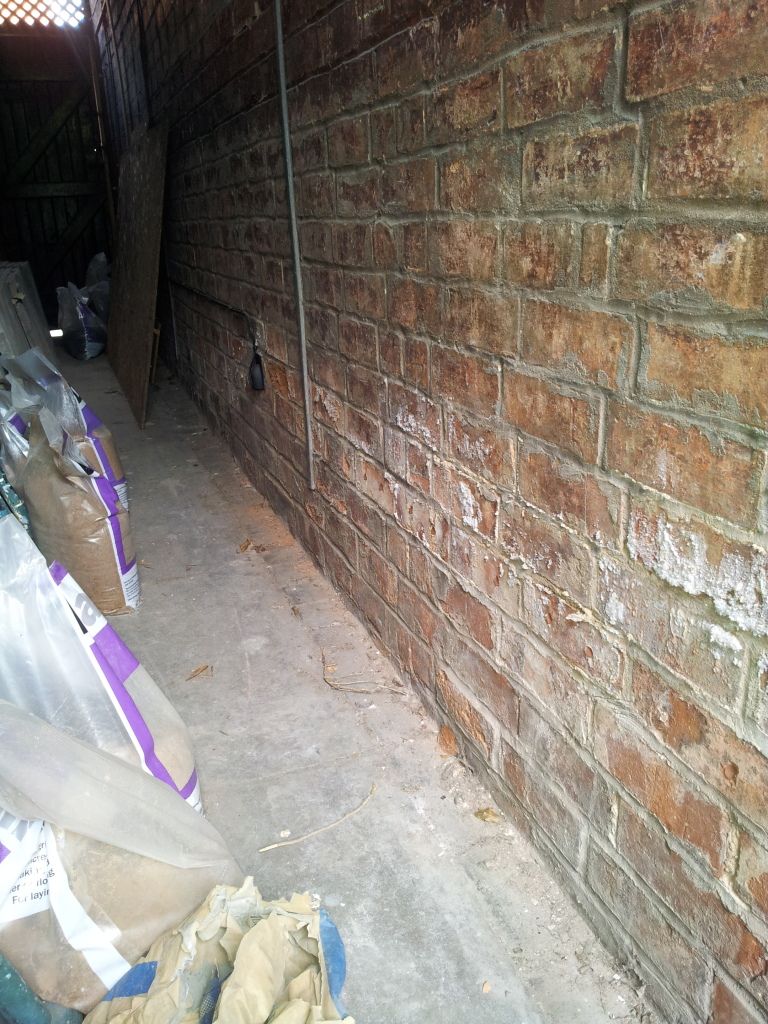Hi.
We have recently moved into a 1900s terraced house and we have this damp wall.
This wall is the only obviously damp wall in the house and it is the wall that corresponds with the entryway to the back garden outside, where there is visible white effloresence on the bricks.
We had an independent survey that said it is a combination of hygroscopic salts when it had an open coal fire and the chimney which needs repointing and capping. He also said it needs concrete tanking and finishing with renovation plaster.
The building work has been done and now i want to sort this wall.
So, after much reading and speaking to experts and "experts" i have come to understand that everyone has their own opinion so the combination of all this has led me to this plan.
Remove manky plaster and 300mm of good plaster back to the bricks, give a good clean and leave to dry out.
paint with either a bitumen based sealant or damp proofing slurry.
2 layers of render of 3 sand and 1 cement and waterproofer. then the finishing layers which was in the sticky of this forum.
Does this seem viable? i take it concrete tanking is essentially the same as the cement render with waterproofer? I've done plenty of plastering work patching up and repairs before but not tackled anything of this scale.
many thanks
alex
here are some pics of the offending wall.


We have recently moved into a 1900s terraced house and we have this damp wall.
This wall is the only obviously damp wall in the house and it is the wall that corresponds with the entryway to the back garden outside, where there is visible white effloresence on the bricks.
We had an independent survey that said it is a combination of hygroscopic salts when it had an open coal fire and the chimney which needs repointing and capping. He also said it needs concrete tanking and finishing with renovation plaster.
The building work has been done and now i want to sort this wall.
So, after much reading and speaking to experts and "experts" i have come to understand that everyone has their own opinion so the combination of all this has led me to this plan.
Remove manky plaster and 300mm of good plaster back to the bricks, give a good clean and leave to dry out.
paint with either a bitumen based sealant or damp proofing slurry.
2 layers of render of 3 sand and 1 cement and waterproofer. then the finishing layers which was in the sticky of this forum.
Does this seem viable? i take it concrete tanking is essentially the same as the cement render with waterproofer? I've done plenty of plastering work patching up and repairs before but not tackled anything of this scale.
many thanks
alex
here are some pics of the offending wall.




